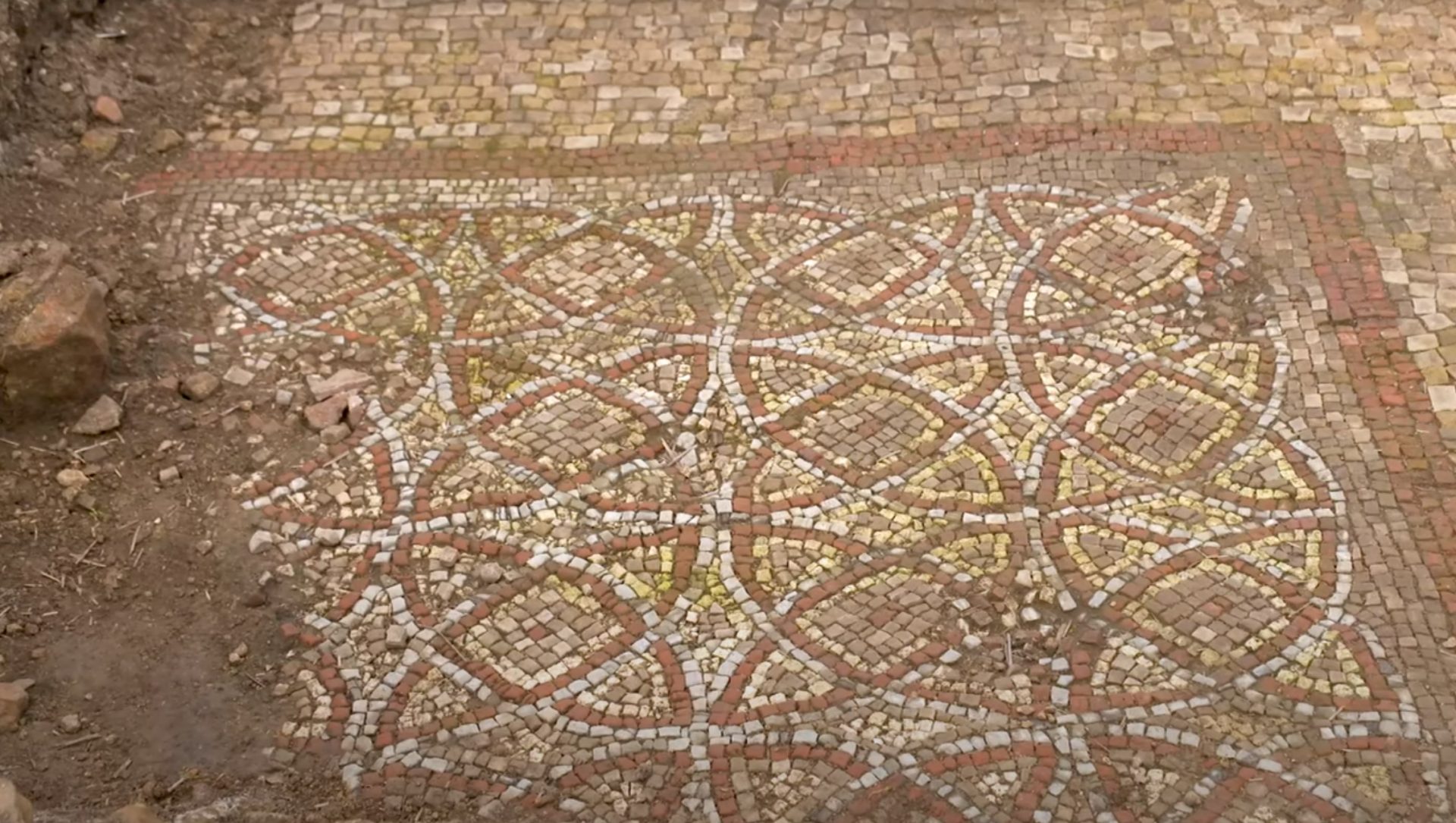Archaeologists from Historic England and the University of Leicester have uncovered a second mosaic at the site of the 2020 mosaic discovery in Rutland, England.
Excavations in 2020 found the remains of a mosaic that depicts the story of the legendary hero Achilles from the Iliad and his battle with the Trojan Prince Hector. The artwork forms the floor of what was thought to be a dining area in a large villa building, occupied during the 3rd and 4th century AD in the late Roman period.
The Iliad, also referred to as the Song of Ilion, is an ancient Greek poem in dactylic hexameter, traditionally attributed to the author and poet Homer. The Iliad is set during the Trojan War, where a coalition of Mycenaean Greek kingdoms led by King Agamemnon lays siege to the city of Troy. The Iliad is among the oldest extant works of Western literature and tells of the quarrels between Agamemnon and Achilles.
A geophysical study and further archaeological evaluations conducted at the time, found several supporting buildings, including what appeared to be aisled barns, a possible bath house, circular structures and a series of boundary ditches.
Ongoing excavations in 2022 have now revealed a large hall located 50 metres from the main villa, which was likely an ancient barn conversion originally built from wood and converted to stone during the 3rd or 4th century AD. One end of the structure was used for agricultural or craft work, while the other end was an extensive domestic area which had a bath suite, containing a hot (laconicum) and cold (frigidarium) rooms.
There is evidence of sophisticated underfloor heating that used different techniques to maintain varying temperatures and heating ducts built into the walls. It is thought that the floor of a water tank situated outside the building might have been used to collect water from the roof.
Focusing on the main villa, the team found fragments of polished marble, broken stone columns and painted wall plaster. Most notably is evidence of mosaics in the corridors leading to the dining room, one of which is relatively intact and features an intricate geometric pattern that probably dates to the same period of construction as the Trojan War mosaic.
The new discoveries give further evidence to suggest that the villa was occupied by a wealthy individual, also suggesting that the estate may have been inhabited earlier than previously thought.

Historic England’s Chief Executive, Duncan Wilson, said: “This is a fascinating site and has posed many questions about life in Roman Britain. The answers will become clearer as the evidence is examined over the next few years by a team of specialists, and their work will help us understand the story of this villa complex, and its significance for our understanding of Roman Britain.”
John Thomas, Deputy Director of ULAS and Project Manager of ULAS excavations, said: “It’s difficult to overstate the significance of this Roman villa complex to our understanding of life in late Roman Britain. While previous excavations of individual buildings, or smaller scale villas, have given us a snapshot, this discovery in Rutland is much more complete and provides a clearer picture of the whole complex.
Header Image Credit : University of Leicester





